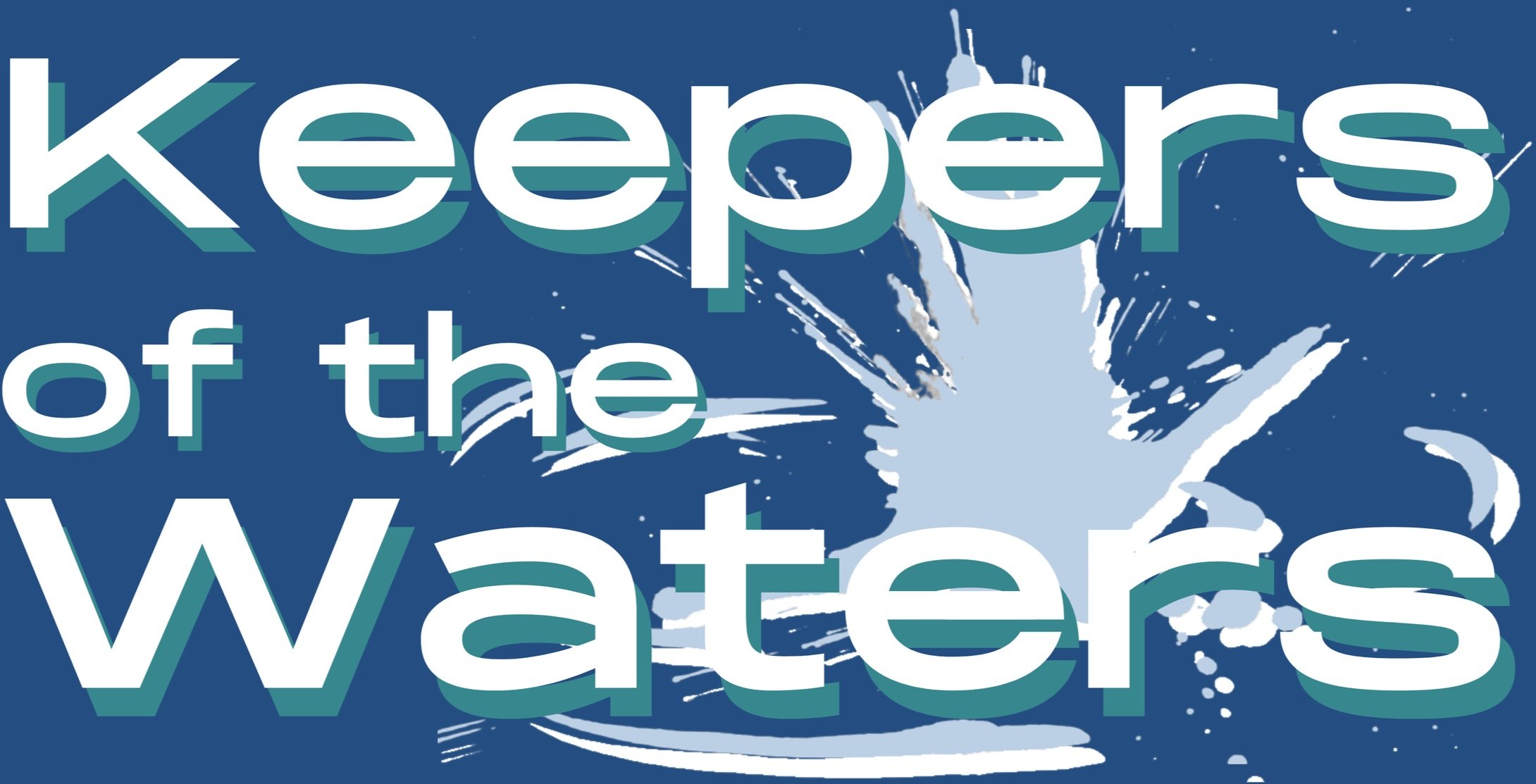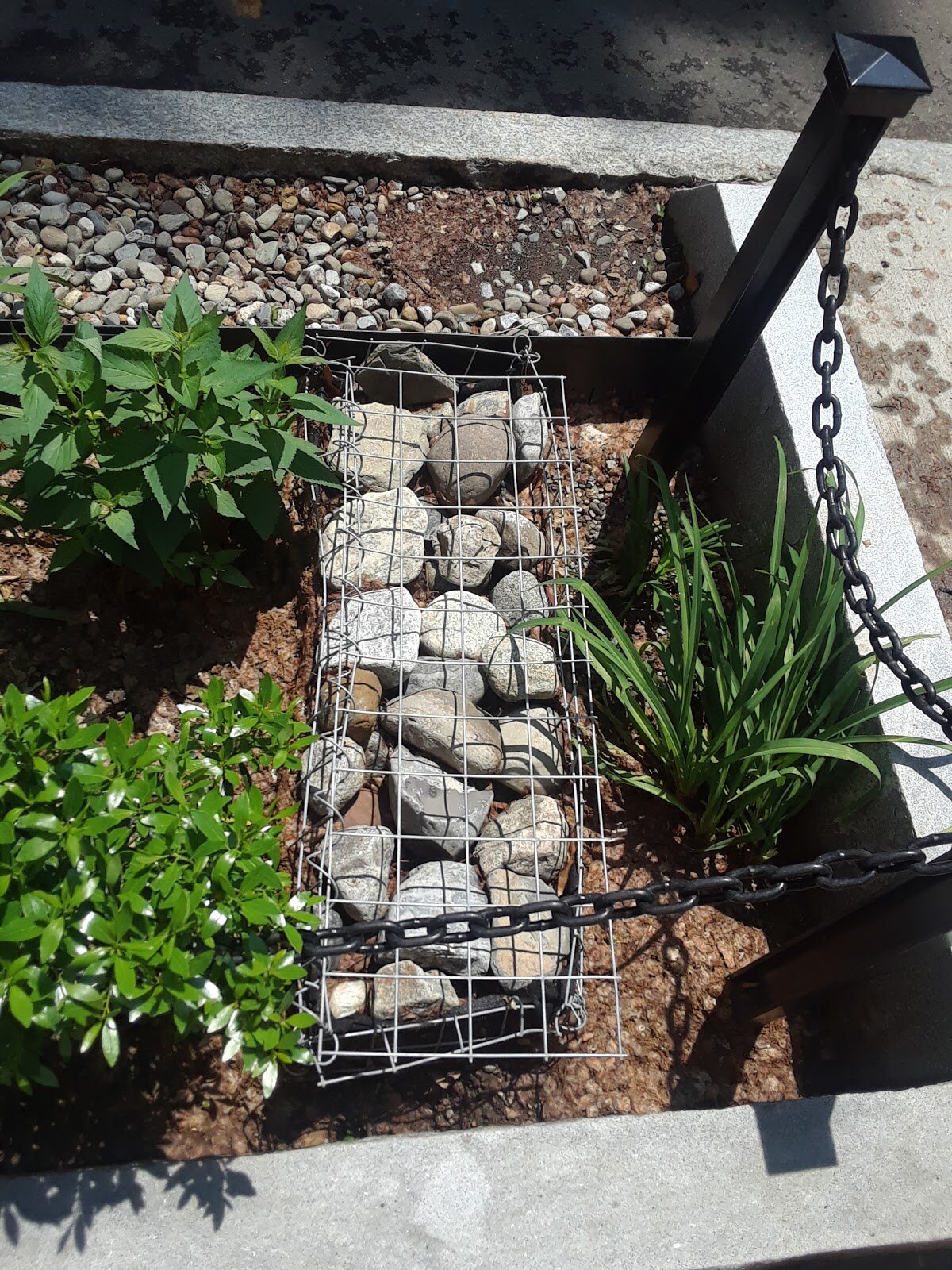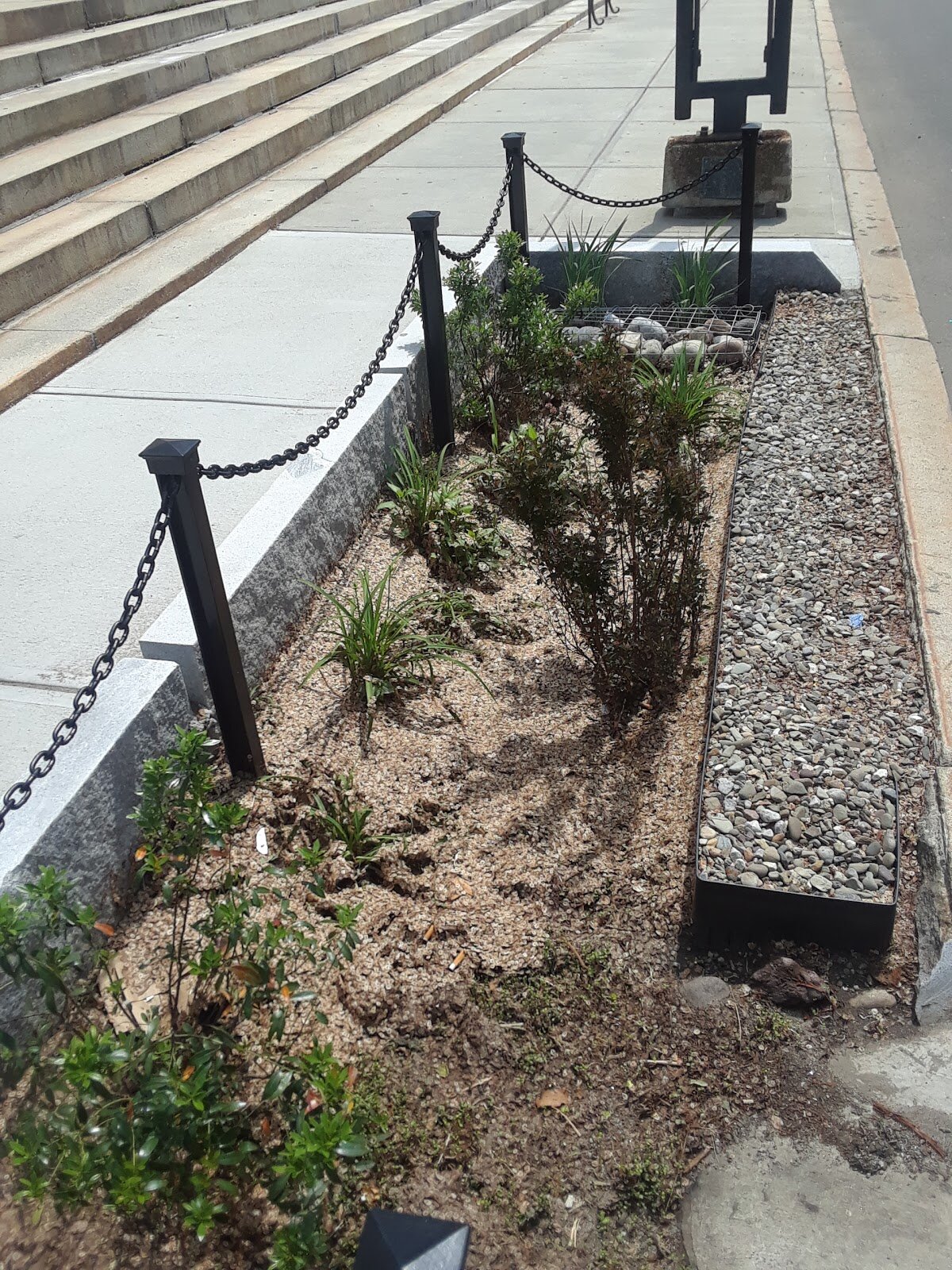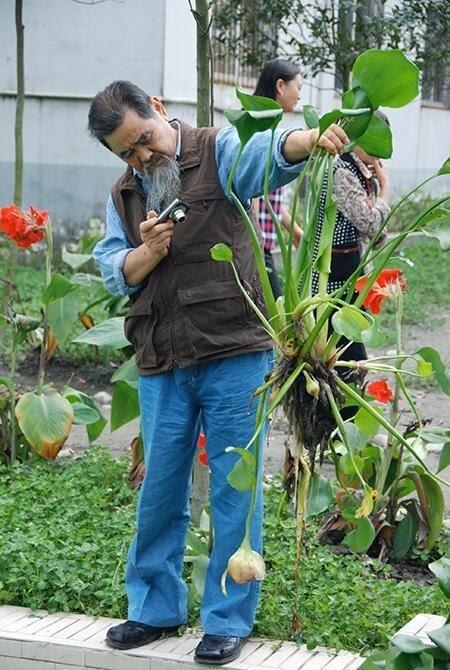Designs for Complexity & Resilience
There are many levels of designing for complexity and resilience. The most fundamental concept is that water must be the foundation of planning and design. If water is the foundation of planning and design, then all housing developments, shopping malls, parking lots, and housing developments, road systems and transportation hubs need to have a water plan that contributes to the sustainable future of your community. This is generally not even in the minds of those planning, and is rarely required. This basic planning for water will help prevent flooding. And together with trees and plants, it will increase the biodynamic of the landscape, and mitigate the dirty run-off from cars. Wildlife will increase, air quality will improve.
The following pages illustrate green infrastructure according to its function in interacting with water. These solutions are arranged from micro to macro, small to large. We begin with things you can do in your home or your backyard. Although domestic and municipal water use is small in comparison to industrial and agricultural withdrawals, you can significantly reduce your own water bill. It would make a big difference if many in your community implemented these designs in their own homes. Most importantly, you’d be taking part in a collective effort that could snowball into a big project. Water is the restorative element, and highly destroyed ecosystems can be revitalized by attracting and retaining water.
A big project would include one or more macro solutions. These larger projects invite community members and community institutions to work together to retain, clean and divert water to improve your water usage and balance. All aspects: roads, parks, farms, development plots will be part of the larger plan.
Each design is also listed as being part of one or more categories. The categories include: Storage, Conveyance, Infiltration, and Treatment. When studying your maps and water balance, you will find that you need to store, move, infiltrate and/or treat your water. Different communities have different needs, and this list will make it easier for you to quickly identify which designs are needed in yours.
There is a list of ways to capture rainwater and reuse it with detailed drawings in the work of Brad Lancaster. Throughout history, people have invented a great many solutions, and there are many more to be invented; you might invent one that is suitable for your situation.
Micro solutions (your yard, your land)
Tree well, garden irrigation, green wall: Easily constructed water diversions for home landscapes. A tree well is a simple underground system built around the base of a tree with stones that delay water near the tree roots to be filtered naturally. You can build downslopes to direct water towards your garden. A green wall augments dull impervious architecture with vertically growing plants that use and filter water as it flows down the wall. (Storage)
Rain barrel: Widely available containers for holding water (it can even be a trash can) usually connected to the end of a downspout. You can use this water for anything at home, even treat it and drink it. (Storage)
Roof Storage: Collected roof water can be diverted to various storage containers. Those open and above ground will encourage evaporation. (Storage)
Stormwater pond
Pond, stormwater pond: Open-air ponds storing runoff from roofs and parking lots. Stormwater ponds are built specifically for controlling flooding by collecting and storing stormwater. (Storage)
Roof chains: Chains or chain-like designs that hang from gutters. As opposed to downspouts, chains slow down and aerate the water as it falls. (Conveyance)
Flowforms from the Living Water Garden
Flow forms: Sculptural designs that convey water in a vortex form to slow, aerate and regenerate water. (Conveyance, Treatment)
Bioswales: A landscaped contour that allows water to spread out on a deliberately vegetated surface. This conveys the water slowly, providing interaction with plants to treat the water as it flows, even including rocks. (Conveyance)
French drains: Trenches filled with gravel and lined with plastic, clay tiles, or another non-porous material. They can be used instead of pipes and as footing drains around your house to direct water away from the foundation. Gravel acts as a filter for large debris and as a surface for healthy microbes to flourish and pre-treat water. (Conveyance, Infiltration, Treatment)
Plants and trees: Vegetation not only slows down water to allow it to infiltrate, but trees also improve soil structure, creating channels with their roots that quickly convey water underground. (Infiltration)
Humans depend on trees for our ability to live on earth and we are just beginning to understand the extraordinary complex functions they serve. They work together in groves, communicating and collaborating. They care for sick trees and bring up the next generation. We plant them in single rows in our cities. This is not the best way to have strong trees. Mass cutting has become normal, the standard procedure for harvesting them, but this is destructive.
Bees: Like water, bees are a central connection in many ecosystems: 30% of the world’s crops are dependent on cross-pollination by bees. In other words, most meals you eat depend on bees. But bees are dying at an alarming rate. According to the University of Maryland, in 2018 American beekeepers reported losing about 41% of their honeybee colonies, a 3% increase in the loss recorded in the same period for 2017. The decimation of bee populations is due to habitat destruction, widespread use of harmful pesticides, and invasive mites interfering with colonies. On a grassroots level, we can each do something to help the bees. We must stop using harmful fertilizers in our gardens. We can make bees feel welcome in our own backyards by prioritizing native species, and even letting a few dandelions grow. Last, we can try to buy vegetables grown locally. Long-distance industrial agriculture is largely to blame for this crisis, so we should do what we can to stop supporting the industry.
Roof materials: Capturing and reusing our rainwater and returning it to the land is one of the most important things we can do to address water scarcity and water excess. Rainwater capture starts with the roof. To repurpose rainwater into drinking water, you will need to use contaminant-free roofing materials and include a filtration system. As far as roofing materials go, tin is one of the best materials to use for a rainwater harvesting project because it carries with it no risk of contaminant. Wood is generally a poor material for this purpose; it leaches contaminants into your water. For this very reason, it’s important to trim tree branches from overhanging the roof, which can drop their own contaminants. To capture water for watering a garden, washing cars and homes, and other outdoor purposes does not require filtration, and is also compatible with lower-grade roofing materials like shingles, ceramic, and cement. Another factor to consider is water loss through evaporation: darker materials heat up more in the sunlight, leading to higher rates of evaporation when rainwater hits the roof. Consider painting darker metals with an approved, non-contaminating lighter coating, like NSF-61.
Rain Gardens: Deliberately constructed low areas to hold water temporarily, so it can seep into the ground before being swept out onto streets and into storm drains. (Infiltration)
Low-flow showerheads, toilets and greywater appliances: Low flow showers and appliances that recycle gray water can reduce home water use by nearly a third, lessening the load on wastewater treatment. (Treatment)
Composting toilets: Allow us to reduce human waste in sewage. Also provides you with fertilizer for your own garden or your communities. Popular for boats to meet overboard discharge requirements. (Treatment)
Drinking Water fountains: Let’s make plastic bottles obsolete. Drinking fountains were once a sacred part of urban life. Today, they’re in crisis, mostly because of bottled water and the bottling industry’s misinformation campaigns. According to “Water fountains have been disappearing from public spaces throughout the country over the last few decades,” says Nancy Stoner, an EPA administrator. The disappearance of water fountains has been disastrous for public health. A researcher with the Centers for Disease Control who spoke with the Washington Post found that “the less young people trust water fountains, the more sugary beverages they drink.” This puts young people at increased risk of developing obesity-related illnesses such as Type-2 diabetes. Bottled water is also terrible for the environment. The amount of oil required per year to produce America’s bottles would be enough to power 100,000 cars for a year. Last, bottled water is infinitely more expensive than water from a water fountain. In other words, bottled water is bad for the environment, bad for our wallets, and bad for us.
Swimming pool: Pools and other water features can be fed with rainwater to mitigate heavy stormwater loads and supplement fire suppression and drinking water supply. (Storage)
Filters: The Biosand filter comprises a container—plastic or concrete—and is about the size of an office water cooler. It has an inset plastic pipe and is filled with layers of sand and gravel. Dirty water is poured into the top of the biosand filter, where a diffuser plate evenly distributes the water over the sand bed layer.
Macro Solutions
Catch-basin treatment systems: These are modified catch basins that clean water and grit, and remove oils and greases from the water. (Storage, Treatment)
Parking lot storage: Parking lots, plazas and other hard surface areas can be designed with thin pipes and higher curbs to temporarily store water during storms. (Storage)
Pipe Storage: Pipes can be designed to perform functions other than rapidly conveying water. They can be over-sized so that they can store water underground. They can be small to restrict flow so that downstream systems aren’t overwhelmed by runoff. (Storage)
Constructed wetlands in the Living Water Garden
Constructed wetland: Wetlands serve innumerable functions. For water storage, a clay-bottom soil constructed wetland is particularly effective. Another advantage of constructed wetlands is that they have lots of gravel and root systems that hold and slow down water to aid infiltration. Yet another advantage of wetlands is that their diverse ecosystems can clean water with similar microorganisms as those used in municipal wastewater treatment facilities. Gravel, root systems and bacteria filter, aerate, and clean organic waste. (Storage, Infiltration, Treatment)
Increasing Shoreline Capacity: Plants like mangroves prevent shoreline erosion, capture carbon, provide habitat for countless species, and weaken storm surges that threaten coastal communities. But mangroves have been devastated by human activities. The Sri Lankan Mangrove Conservation Project is working to bring the reforestation movement to this unique environment between land and sea.
Lake: The most well-known system of water storage is the water supply lake, frequently created by damming to control its level and the amount of soil. (Storage)
Groundwater: Water sitting among rock and soil underground can act as very effective storage—the sun and plants cannot easily drain groundwater. Many communities are now directly piping their surface runoff to the groundwater. (Storage)
Check dam: Any form of small dam placed on slopes in swales and at the edges of parking lots, to slow down the flow of water. (Conveyance)
Porous pipes: Pipes that are perforated with holes or made from porous materials so that they allow some water to sink into the earth.
Open-bottom culvert: A culvert brings a stream underground to pass under a road or railroad. Opening the bottom to the earth slows down the water allowing fish passage, infiltration, and contact with rocks and plants. (Conveyance, Infiltration)
Riverbank stabilization: High volumes of runoff can scour the bottoms of streams and rivers. Adding plant material and rock and widening the bank can all increase resilience by slowing down runoff. (Conveyance, Infiltration)
Multiple outfalls: Single pipes that release water do so at a high speed which can scour river and stream bottoms. Spreading the water flow into many different outfalls can solve this problem. (Conveyance, Infiltration)
Porous pavements: Materials that, rather than completely covering the surface, allow water to permeate. These include concrete blocks with grid shapes, gravel, special asphalts. (Conveyance)
Gravels, infiltration ditches: Unlike French drains which convey water away, these are large underground gravel systems where runoff can be directed to slowly sink into the ground. (Infiltration)
Street cleaning and garbage collection: A major source of contamination is runoff from human dirty surfaces—the cleaner we keep them the cleaner runoff will be. Especially clearing leaves, which can overwhelm pipes and streams. (Treatment)
First flush treatment: Rainfall on dirty urban impervious surfaces is dirtiest in the first inch or two of rainfall (about 5 minutes). You can treat this water in wetlands or other green infrastructures. You do this by using systems on timers that divert that water. You can achieve a timing system with pipes at different levels. (Treatment)
Ecological treatment/living machines: These are treatment systems for residential sewage that can be developed on a neighborhood scale to reduce organic waste in your water. They can be developed into community greenhouses and provide great educational opportunities. (Treatment)
Biological treatment: Standard wastewater treatment that uses monocultures of microorganisms to treat wastewater on a large scale. (Treatment)
Natural Filtration: Nature is always working. She cleans water as it moves through different ecosystems, especially wetlands.
There are powerful and interesting ways that water is cleaned naturally, and many of these are utilized in systems created to clean water. These systems are working all the time through plants, microbes movement, sunshine, and complex layers of rock sand and gravel. As water travels through certain places it picks up particles, primarily minerals—some beneficial and some not. This accumulation of these minerals is why some water is hard and some soft. I visited a rather polluted reservoir north of Beijing. To my surprise, when we walked below the dam, we could see clean waters and deduced that there must be an area underneath with a lot of sand that was cleaning the water. I learned from my father that watercress indicated clean water. I learned in China that they knew many ways to recognize water quality. Most of the knowledge has been lost.
After the oil spills, it was discovered that microbes were cleaning up the oil. Oil has been in our environment and oceans for a long time and nature evolves her ways to clean up.







